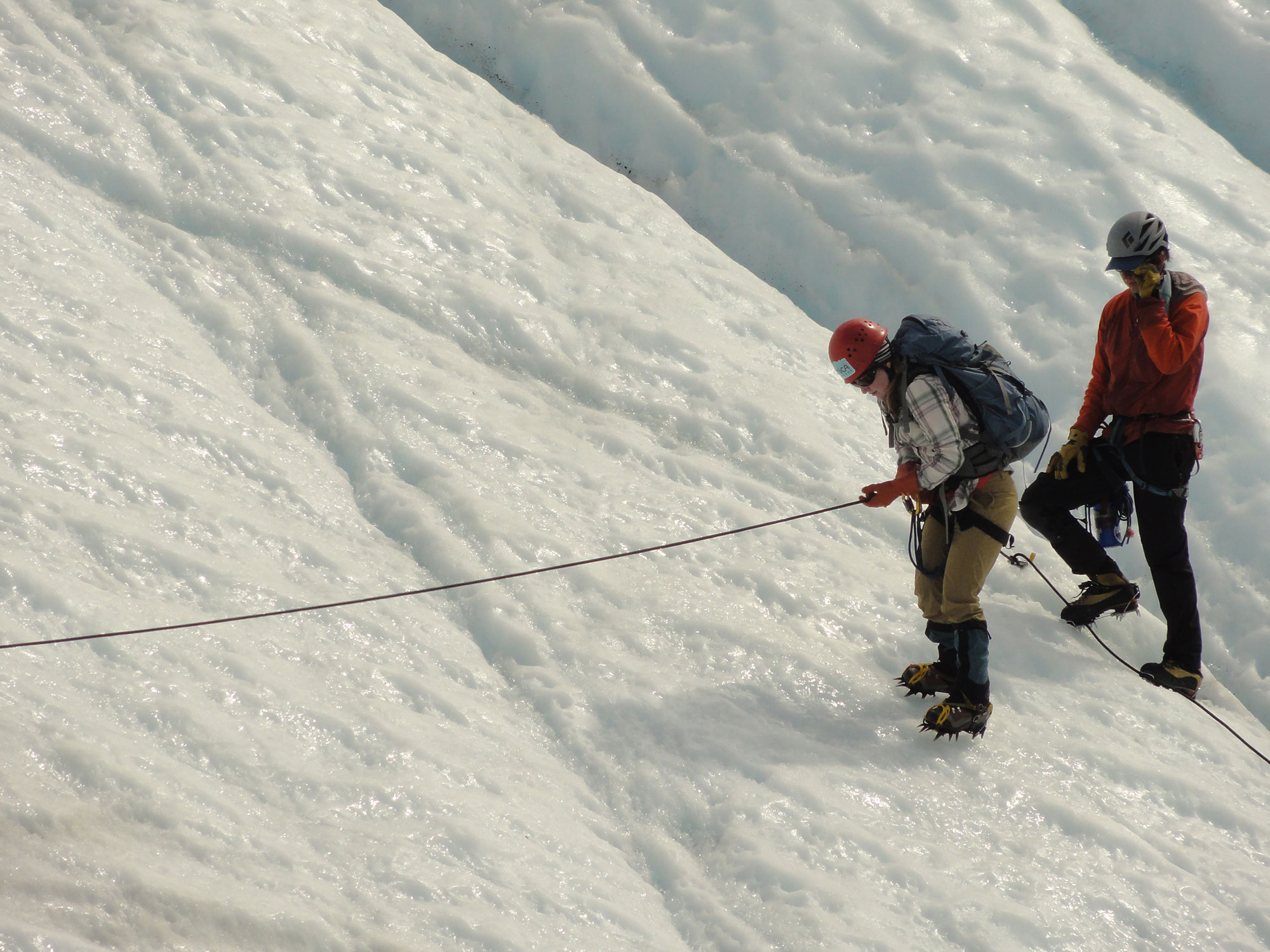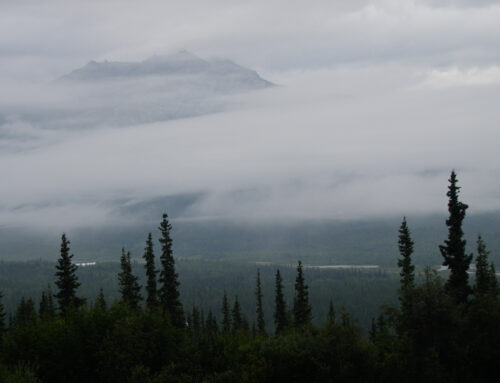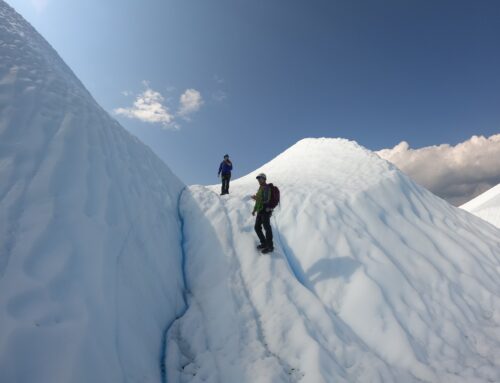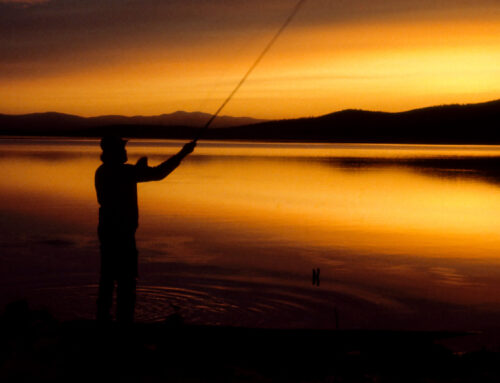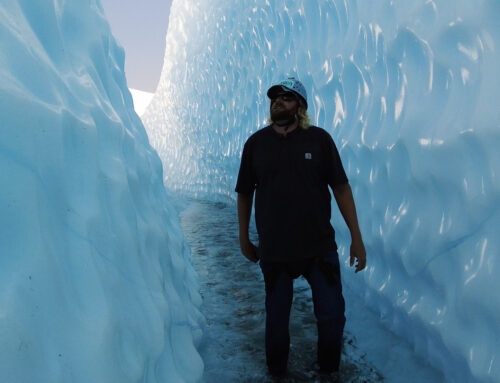What to Wear in Alaska
When exploring Alaska, especially the Prince William Sound or Matanuska Valley, it is important to be prepared for any weather. These features sit where the weather is unpredictable and quick to change. At Exposure Alaska, in conjunction with MICA Guides, we tell our clients to dress in layers: a base layer, an insulating layer, and a waterproof layer. Follow this Alaska gear advice to ensure a great trek or climb in any precipitation or fluctuations in temperature.
The base layer: We recommend a wool or synthetic base layer shirt and wool socks. Typically, any wool material is best. Wool insulates you and creates warmth, whereas cotton does not keep warm when wet. This is especially important for your feet. So, make sure to wear wool or synthetic socks! A small puddle could actually be a very deep moulin, and a wrong step could mean a very wet foot.
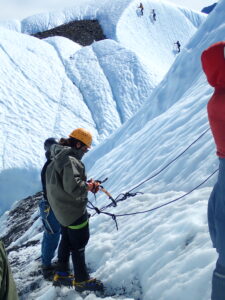
When ice climbing it can be essential to bring a water proof layer if you want to avoid any glacial melt
The insulating layer: Over your base layer shirt you will need an insulating jacket. This will add extra warmth. There are a couple different options, down or fleece jackets. With this layer, you can wear it when the glacier is cool and breezy. Put this layer in your backpack when the sun is strong and glaring. Since the weather can change so drastically and so quickly, it is important to have something to keep you warm even on sunny days.
The waterproof layer: A rain jacket is necessary for traveling the Matanuska Glacier. Some days start off cloudless and sunny and turn into thunderstorms and angry skies in a flash. We trek in all weather and we expect to experience a spectrum of weather each day. A rain jacket keeps you dry on rainy days and also acts as a protective covering to your insulating layer. This helps to protect that layer too if you slip or slide against the sharp ice. Forgot your raincoat and you’re already suiting up with MICA Guides? No need to fret, they have some extra on hand to loan out.
By looking at the weather forecast, it may be tempting to only bring a sweater and wear a t-shirt and jeans to your glacier hike on a hot day. Please remember that this weather can change in a second and is always subject to change! You’ll be thankful for having dressed in layers when the rain comes and the cool breeze starts to blow. Bring more than what is needed and be prepared. It is best to avoid being wet and cold in the middle of a giant ice cube!
Looking for a good Gear List? Check out these resources.
